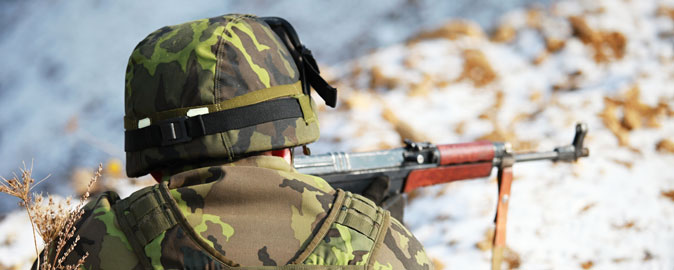New methods in the fight against post-traumatic stress disorder
Soldiers who are haunted by frightening images before they are deployed in war zones are more likely to develop symptoms of post-traumatic stress disorder. New knowledge can be used for both screening and treating soldiers.

Soldiers who are haunted by frightening images before they are deployed in war zones are more likely to develop symptoms of post-traumatic stress disorder (PTSD). Professor and centre director, Dorthe Berntsen, Centre on Autobiographical Memory Research, Aarhus BSS, and David C. Rubin, Duke University, have discovered the phenomenon which they have labelled pre-traumatic stress.
The researchers developed a new questionnaire for examining 218 Danish soldiers just before, during and twice after the soldiers were deployed in Afghanistan for six months during 2009. It turned out that the level of pre-traumatic stress could contribute towards an explanation of why some soldiers developed symptoms of PTSD, while others did not. Other contributing factors are the soldiers’ personalities as well as the violent experiences which they have had.
“In combination with other tools, we can use this to screen the soldiers before they are deployed. We are not able to point out three extra people who will definitely develop PTSD, but we will be able to identify some people who are at a greater risk,” says Dorthe Berntsen.
The mental health state of the Danish soldiers was generally good. Even though some had symptoms of both pre-traumatic stress and PTSD, only a few actually became ill.
Involving the past as well as the future
The new results challenge the traditional understanding of PTSD as an illness which is primarily linked to the past. And which is associated with sufferers plagued by invalidating and frightening recollections of previous experiences, who attempt to avoid thinking about specific experiences, and whose bodies are in a heightened state of alert.
Pre-traumatic stress involves similar reactions when thinking about the future. Soldiers who suffer from this before they are deployed, continued do so after they return home.
“We know from other anxiety disorders that people worry just as much about the future as about the past. However, so far this has been overlooked in connection with PTSD,” says Dorthe Berntsen.
The researchers do not know what specific images the soldiers are haunted by or why some suffer more from the problem than others. However, much research from within the last 10-15 years has shown that the way in which you remember your past is linked to the way in which you imagine the future. Among other things, it is known that many of the same structures in the brain are involved.
New treatment opportunities
With the new perspective on PTSD, the researchers also see new treatment opportunities.
“In the treatment of PTSD, much of the focus is on recollections of past traumas. Now we have shown that thoughts about the future represent just as much of a problem. You also have to work with these thoughts therapeutically,” says Dorthe Berntsen.
Researchers suggest that existing treatments are supplemented with methods specifically aimed at the future. Other studies have also shown that mindfulness can be effective. It may contribute to lowering the general stress level, and it is therefore likely to have an effect on images related to both the past and to the future.







